| Revista Umělec 2011/1 >> Bishkek constructivism | Lista de todas las ediciones | ||||||||||||
|
|||||||||||||
Bishkek constructivismRevista Umělec 2011/101.01.2011 Boris Chukhovich und Oksana Shalatova | geometry | en cs de ru |
|||||||||||||
|
Five years ago, the curator of documenta 12, Roger M. Buergel addressed the major concern of the art world; can modernity now be considered our antiquity? This provoked a lot of responses. It seemed that for Buergel, this was more a question of the external (like Baudrillard, perhaps), but in any case, it was linked to the exhibition in Kassel. Documenta 12 did not only focus on dialogue with Modernity, but it also cut the form of exhibition as if down its vertical axis, starting with the 14th-16th century and continuing on a cultural and historical plane. Documenta adopted in its exhibition the traditional Eastern school of miniatures, Asian and African textiles, articles from the 50s and 60s–objects from a heritage upon which European modernity had little impact or even none whatsoever.
It is telling that other recent [artistic] programmes which have dealt with the problematic of Modernity, such as Altermodern by Nicolas Bourriaud, do not properly comprehend the importance of these themes. On re-reading Bourriaud’s ‘Manifesto’, which proclaims the death of post-modernity, we find that, paradoxically, Altermodern deals with a huge number of post-modern themes and characteristics. Triumphant creolization, nomadic references to contemporary culture, a growth in the significance and wandering of translations, subtitles and dubbing: these are not only factors of ‘late’ post-modernism, but they are quintessential elements of it. If addressing the issues of Modernity and calling for a new “other Modernity” by way of adding the prefix ‘alter’ in itself does not justify Bourriaud’s conclusions, it does, nonetheless, fully correspond to the spirit of the times we are living through. The atomization of ideas and the state of the post-modern itself do indeed instil a kind of nostalgia for ‘grand narratives’, for ‘meaningfulness’ and ‘the universal’. It may well be that the art world is not ready to accept this prognosis at the level of a full [artistic] programme or theatrical platform (it was not by accident that Buergel confined himself to merely one aspect of these questions, and Bourriaud to the pages of a single, monosyllabic text). Rather, we are living through a period of conceptual sketches, centred on our subconscious desires and aims. The brevity of theoretical statements is juxtaposed with the practise of exhibition and its sweeping statements. But in different situations, for varying reasons and across different continents, the draw towards modernity acquires flesh. In particular, during the spring of 2010, two exhibitions on this subject were opened to the public on two different continents. In North America, the Montreal Museum of Modern Art organised the exhibition Yesterday’s Tomorrow, which put forward the question, “Why have so many contemporary artists returned in recent years to the forms, ideas and aspirations of Modernist architecture and design?” Ten international modern artists took part in the exhibition, whose work was considered to encapsulate the era of Modernity. It was somehow quite similar to an exhibition which happened a month earlier in Bishkek, the capital of Kyrgyzstan. As the curators of that exhibition, we would like to discuss this further. During the course of the central Asian photography project STILLS (www.stills.kz), we noticed that in the works of Kyrgyz authors there were often references to the ‘plastic’ experiments of the 1910-1930s avante-guarde. Particularly prevalent was the use of ‘geometrism’, as well as ‘dynamic dialogue’, non-frontal angles, and games with reflexes, shadows, and reflections (Natalia Andrianova, Anna Zima, Alla Kivachitskaya, Roman Kirichenko, and Isken Sydykov). Also common were objectless linear sketches (Gregorii Kolotov), and frame compositions by the group ‘...graphic’. We also found that this kind of work is also common outside of Kyrgyzstan (Gaisha Madanova, Galim Mdanov [Almaty], Vitaly Mordovin [Tashkent]). Tentatively calling this work ‘Bishkek constructivism’, we do not intend to identify one style only. In this genre, we believe it is possible to include the linear energy of orthodox constructivism, as well as an interest in texture and surfaces with inspiration from other areas. The same applies to the genealogy of media: there were several works in the exhibition which referred to photographic history, and other ancestors of modern media such as painting and assemblage. In other words, in their works, the artists in Bishkek are reviving a kind of integral, quintessential formalising “spirit of the avant-garde.” Of course, modern art can hardly be considered to be a vanguard as it only really references the corresponding archive. In exhibited works [in Bishkek], man often appears as an element of geometrical arrangement, but never as a cog in the ‘peace-building’ machine, as was the case with the photography of the avant-garde classics. Modern visual design serves to highlight the games of urban rhythm; it embodies the metaphors of isolation present in our urban jungles, commenting on the motives of pantheistic resolution in the city landscape and portraying the experiments of retro-reconstruction. But the main thing that differentiates central Asian constructivism from that of the 20th century is not ideological sterility or an absence of slogans, but quite the contrary: it is the presence of not only constructivist mythology but also all the other experiments of Soviet art. Soviet painting, 1920s-1930s film, 1960s style, the nostalgia of the 1970s, and even the derision of 1980s Sots Art–all of these elements shone through the constructivist works at the exhibition. Contemporary constructivism, which once served as a projection into the future, was radically transformed and affected by the collective memory of the soviet generation. The change in vector from the future to the past is not simply retro-fantasy, but it also quantitatively re-shapes the ‘neo-constructivist’ referential field of signs. Indeed, it is not even a question of new signs. Rather, it is one of recollections through the prism of the acquired experiences of ‘initial constructivism’, which in turn is made up of biographies, imperfection, inaccuracy, irony, fatigue, sadness, melancholy and absurdity. These qualities may lead to ‘careless’ creativity, ‘optimistic’ openness, ‘sacred’ iconicity, and ‘strict’ formality–each a distorted memory of their avant-garde prototypes. They did not lose their latent existential quality, or their second or third layers of meaning–elements which serve to personalize contemporary constructivism in opposition to the pure nature of the Russian avant-garde, along with its allegorical dramas. In fact, this reverse perspective, in its formal elements, serves as a base for ‘new art’, and unites all its subsequent transformations. It serves as an innovative demarcation not only for the avant-garde (with its ‘surplus elements’ and its ‘return’ to the absolute), but also for the reminiscences of modern art which inherently shy away from globalism and consistency. In other words, we are confronted with a type of deconstruction which preserves the quality of design and formalization, does not eliminate discourse or criticise icons, and ultimately amounts to an attempt to overcome the complex of total simulation, inherent within ‘modern art’. If this seems like an exaggeration, then it is because ‘Bishkek constructivism’ is stepping out of the space to which it has laid claim. Hence we have the peculiarity and magnetism of its ‘energy’, ‘tension’ and ‘determination’–expressions of the contradictory yet kindred energy, tension and determination of avant-garde utopia. Translated from Russian by Jon Owen.
01.01.2011
Artículos recomendados
|
|||||||||||||
|
04.02.2020 10:17
Letošní 50. ročník Art Basel přilákal celkem 93 000 návštěvníků a sběratelů z 80 zemí světa. 290 prémiových galerií představilo umělecká díla od počátku 20. století až po současnost. Hlavní sektor přehlídky, tradičně v prvním patře výstavního prostoru, představil 232 předních galerií z celého světa nabízející umění nejvyšší kvality. Veletrh ukázal vzestupný trend prodeje prostřednictvím galerií jak soukromým sbírkám, tak i institucím. Kromě hlavního veletrhu stály za návštěvu i ty přidružené: Volta, Liste a Photo Basel, k tomu doprovodné programy a výstavy v místních institucích, které kvalitou daleko přesahují hranice města tj. Kunsthalle Basel, Kunstmuseum, Tinguely muzeum nebo Fondation Beyeler.
|








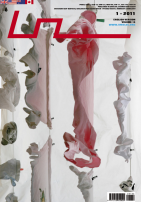








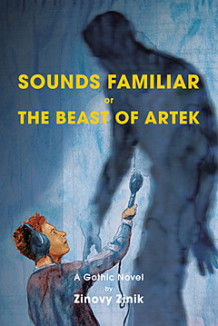






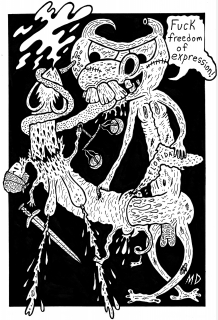





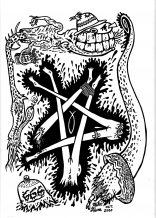
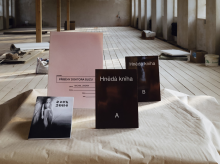
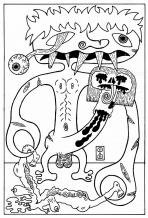


 New book by I.M.Jirous in English at our online bookshop.
New book by I.M.Jirous in English at our online bookshop.
Comentarios
Actualmente no hay comentariosAgregar nuevo comentario